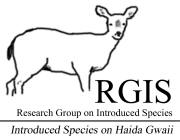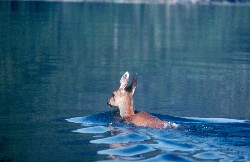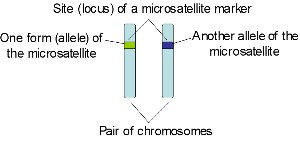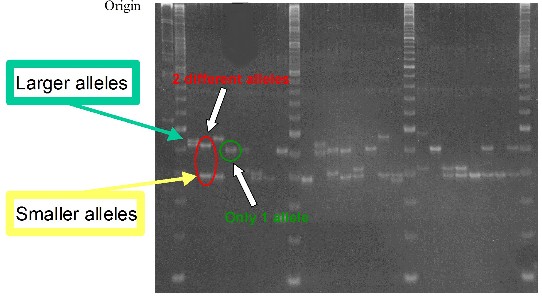

- Menu
- Home
- Haida Gwaii
- Introduced Species
- RGIS
- What did we learn?
- Research
- Publications
- RGIS symposium
- School curriculum
- Contacts
- English
- Français
Deer genetic and morphometric variations |
||
Aim & scope - Where & when - How - Main results - Conclusion - Scientific Publications |
||
Aim and scope |
||
|
||
return to top of page |
||
Where and when |
||
|
||
| return to top of page |
||
How |
||
|
||
return to top of page |
||
Main Results |
||
|
Killed
sex ratios Reef: 1.05 males / females; SGang Gwayy: 0.375 males/ females
Pregnancy rates Reef: 36%; SGang Gwayy: 28%
Parasites, diseases, deformities
Body condition
Other morphometric data have not been analysed yet. Deer dispersal 10 microsatellite DNA markers were analyzed in tissue samples from deer coming from |
||
|
||
| By
comparing allelic diversity for these 10 microsatellite DNA markers between the
main “source” islands ( The alleles carried by an individual are identified through the electrophoresis of the DNA extract. |
||
|
||
|
A reduced
allelic diversity on the offshore islands compared to the source populations
would mean a low rate of colonization from the main islands. On the contrary, a
similar allelic diversity would mean a high rate of colonization. Very similar allelic diversity and allele frequencies were found between SGang Gwayy and The number of migrants per generation suggested by these results was 2.23 between As a generation of deer is 2 or 3 years, the migration rates must be approximately one individual per year. |
||
Conclusion |
||
|
Health condition
Morphometric data have not been analyzed yet. Colonization rate |
||
Scientific PublicationsSee symposium proceedings - PDF |
||
return to top of page |



